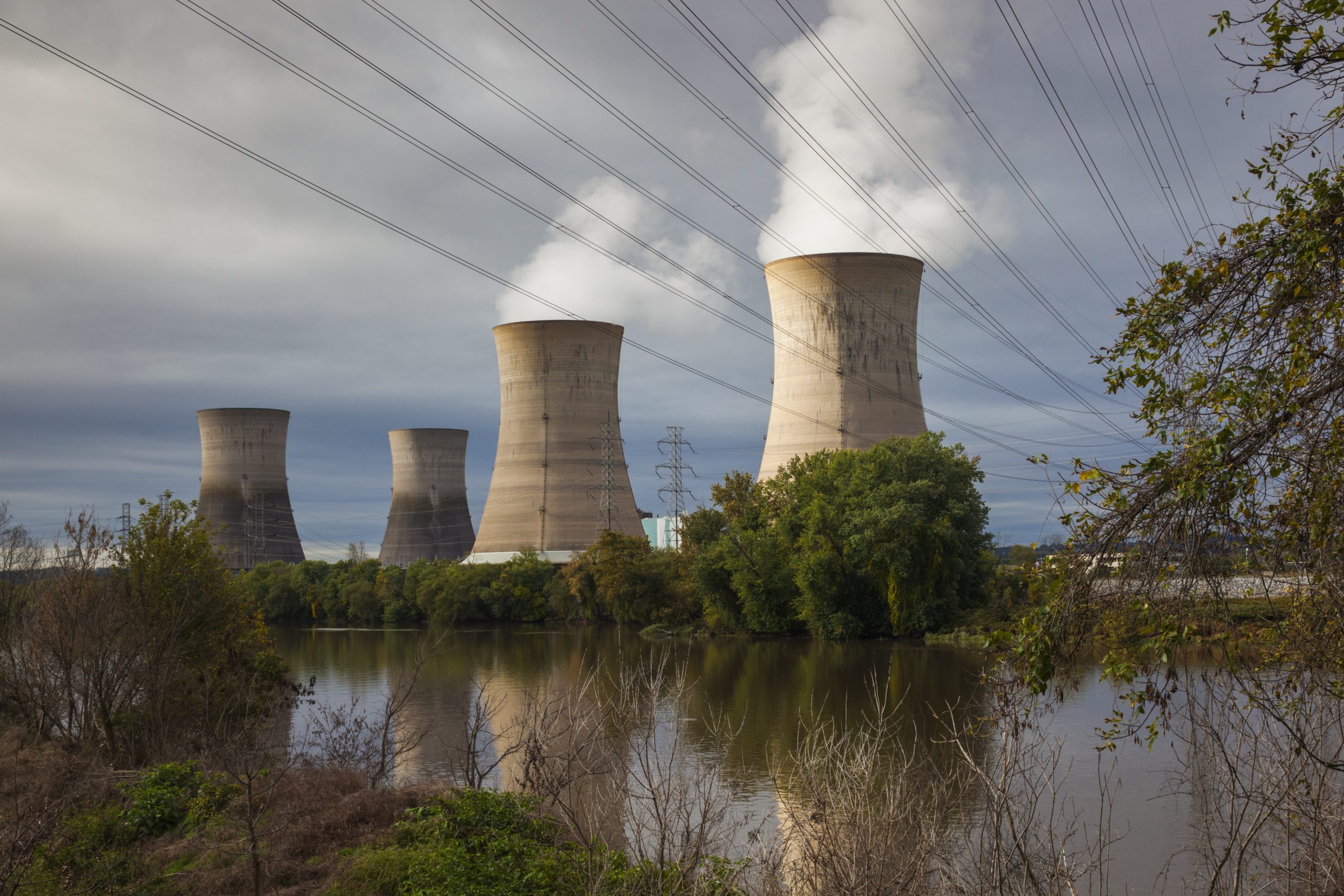
A significant financial commitment from the U.S. Department of Energy (DOE) is set to catalyze the re-energization of a nuclear reactor at the iconic Three Mile Island facility in Pennsylvania. The Trump administration confirmed on Tuesday its intention to provide Constellation Energy with a $1 billion loan, earmarking these federal funds for the ambitious project to bring the dormant Unit 1 back online. This move signals a pivotal moment for both the nuclear power industry and the burgeoning energy demands of the artificial intelligence sector, with tech behemoth Microsoft serving as the primary commercial driver behind the initiative.
A Historic Reactor’s Reawakening
Constellation Energy, a leading clean energy company, had previously announced its strategic decision last year to reactivate the Three Mile Island reactor, which ceased operations in 2019. The impetus for this costly undertaking, estimated at $1.6 billion with a projected completion in 2028, largely stems from a long-term agreement with Microsoft. Under this arrangement, the technology giant has committed to purchasing the entire 835-megawatt output of the refurbished power plant for two decades. The revival of Unit 1 marks a notable chapter for Three Mile Island, a site inextricably linked to the history of nuclear power in the United States, and highlights an evolving perception of nuclear energy’s role in a carbon-constrained future.
The reactor in question is Three Mile Island’s Unit 1, distinct from the infamous Unit 2, which experienced a partial meltdown in March 1979. Unit 1, originally commissioned in 1974, operated for 45 years before being taken offline due to economic pressures, primarily the abundance of inexpensive natural gas that made its continued operation unprofitable. Its planned restart underscores a shift in market dynamics and policy priorities, where the consistent, carbon-free output of nuclear power is gaining renewed value.
The Microsoft-Constellation Partnership: A New Model for Corporate Energy Procurement
While the specific financial terms of Microsoft’s power purchase agreement with Constellation Energy have not been publicly disclosed, industry analysts from Jefferies have estimated the tech company might be agreeing to pay between $110 and $115 per megawatt-hour over the 20-year duration of the deal. This estimated price point presents an intriguing economic calculus. From one perspective, it is considerably more affordable than the construction costs associated with an entirely new nuclear power facility. However, it represents a substantial premium when compared to the current levelized cost of energy (LCOE) for new utility-scale wind, solar, and even combined wind and solar projects equipped with battery storage for round-the-clock power, according to comprehensive comparisons of energy costs by Lazard.
Despite the higher price tag compared to certain renewables, the agreement reflects a strategic premium placed on reliability, baseload power, and the ability to source a massive amount of carbon-free electricity from a single, established asset. For corporations with ambitious sustainability targets and an ever-growing need for uninterrupted power, the value proposition of nuclear energy becomes compelling. This type of direct, long-term power purchase agreement (PPA) with a nuclear facility could serve as a blueprint for other energy-intensive industries seeking stable, low-carbon energy solutions.
Powering the AI Revolution: Why Tech Giants are Turning to Nuclear
The significant investment in Three Mile Island’s revival is emblematic of a broader trend: the surging interest of major technology companies in nuclear power. This renewed enthusiasm is largely driven by the explosive growth of artificial intelligence (AI) and the concomitant expansion of data centers, which are becoming increasingly voracious consumers of electricity. The computational demands of training complex AI models and powering global digital infrastructure necessitate enormous, uninterrupted energy supplies.
Traditional renewable sources like solar and wind, while environmentally beneficial, are inherently intermittent. Integrating large-scale battery storage can mitigate this, but nuclear power offers a distinct advantage: consistent, 24/7 baseload generation without emitting greenhouse gases during operation. This characteristic makes nuclear an ideal partner for data centers, where even momentary power fluctuations can lead to significant operational disruptions and financial losses. Beyond Microsoft, other tech giants are exploring similar strategies. For instance, Microsoft’s competitor, Meta, secured its own deal with Constellation earlier this year, focusing on the "clean energy attributes" of a 1.1-gigawatt nuclear power plant located in Illinois. These agreements underscore a growing recognition within the tech sector that nuclear energy could be a vital component in achieving both sustainability goals and the immense power requirements of the AI era.
The Legacy of Three Mile Island and Nuclear’s Shifting Fortunes
The name Three Mile Island evokes a powerful historical narrative in the context of nuclear energy. The partial meltdown of Unit 2 on March 28, 1979, was the most serious accident in U.S. commercial nuclear power plant history. While no immediate deaths or injuries were reported, and the release of radioactive material was minimal, the incident profoundly impacted public perception, regulatory oversight, and the trajectory of nuclear power development in the Western world. For decades following TMI, and later compounded by the Chernobyl (1986) and Fukushima (2011) disasters, the industry faced significant public skepticism, stringent regulations, and a virtual halt in new plant construction in many countries, including the U.S. This period, sometimes referred to as the "nuclear winter," saw many existing plants struggle economically or close prematurely, as was the case with TMI Unit 1.
However, the accelerating urgency of climate change and the demand for reliable, carbon-free energy sources have begun to reshape this narrative. Nuclear power, once viewed primarily through the lens of safety concerns and waste disposal challenges, is now increasingly being re-evaluated for its crucial role in decarbonizing electricity grids and ensuring energy security. The restart of TMI Unit 1, a site steeped in this complex history, serves as a powerful symbol of this evolving perspective and the industry’s potential resurgence.
Federal Backing: The Role of the DOE’s Loan Programs Office
The $1 billion loan facilitating the Three Mile Island restart is being administered through the Department of Energy’s Loan Programs Office (LPO). Established under the Energy Policy Act of 2005, the LPO’s core mission is to accelerate the domestic deployment of innovative clean energy technologies and advanced transportation projects by providing federal loan guarantees and direct loans. This financial mechanism is designed to de-risk projects that might struggle to secure conventional private financing due to their scale, complexity, or novel technology.
The LPO’s history includes both notable challenges and significant successes. It gained widespread notoriety for its loan to Solyndra, a U.S. solar startup that ultimately declared bankruptcy during the Great Recession, becoming a political flashpoint. Despite this high-profile setback, experts generally regard the LPO as a successful program, boasting a remarkably low default rate of 3.3% after recoveries. A prominent success story is the $465 million loan extended to Tesla in 2010, which the electric vehicle manufacturer repaid by 2013, years ahead of schedule. More recently, the LPO finalized a $1.6 billion loan to American Electric Power to support critical upgrades for approximately 5,000 miles of transmission lines, demonstrating its continued role in modernizing energy infrastructure.
The specific program utilized for the Three Mile Island loan is the Energy Infrastructure Reinvestment (EIR) program, which was authorized under the Inflation Reduction Act during the Biden administration. This program was designed with the explicit goal of revitalizing existing power plants, provided their operations result in the avoidance or reduction of pollutants or greenhouse gas emissions. The Trump administration has maintained the program, albeit rebranding it as the Energy Dominance Financing Program. It is worth noting an administrative detail from the Department of Energy’s press release, which, perhaps erroneously, attributed the EDF Program’s creation to the "Working Families Tax Cut Act" instead of its correct authorization under the "One Big Beautiful Bill Act." This bureaucratic oversight does not, however, diminish the program’s strategic intent or the significance of the loan.
Economic and Environmental Implications of Nuclear Revival
The decision to restart Three Mile Island Unit 1 carries substantial economic and environmental ramifications. Economically, the project represents a significant investment in existing infrastructure, creating jobs during the refurbishment phase and sustaining long-term employment for plant operations. It also brings stable, predictable tax revenues to local communities. The federal loan, in particular, illustrates a public policy commitment to bolstering domestic energy production and maintaining a diverse energy portfolio, potentially signaling a broader willingness to support the life extension or restart of other nuclear facilities across the nation.
Environmentally, the reactivation of Unit 1 offers a substantial source of carbon-free electricity. As the U.S. and global communities strive to meet ambitious climate goals, existing nuclear plants provide an immediate and large-scale solution for reducing greenhouse gas emissions from the power sector. Each megawatt-hour generated by nuclear avoids the emissions that would otherwise come from fossil fuel-fired plants. This aspect is particularly attractive to tech companies like Microsoft, which are under increasing pressure from investors and consumers to demonstrate tangible progress toward net-zero emissions.
However, the long-term challenges associated with nuclear power, such as the safe disposal of radioactive waste and the initial capital costs, remain subjects of ongoing debate and require sustained innovation and policy solutions. The societal acceptance of nuclear energy continues to evolve, balancing memories of past incidents with the imperative of climate action and the need for reliable power.
Looking Ahead: The Future of Nuclear Energy in a Demanding Grid
The restart of Three Mile Island Unit 1, backed by federal financing and driven by the voracious energy appetite of artificial intelligence, could represent a critical juncture for the U.S. nuclear industry. It highlights a potential pathway for extending the operational lives of existing nuclear assets, providing a quicker and often more cost-effective route to carbon-free baseload power compared to constructing entirely new plants. This model of corporate-backed power purchase agreements, combined with strategic government support, could become a more common feature of the energy landscape.
As the demand for electricity continues to escalate, fueled by electrification, digitalization, and the rapid expansion of AI, all reliable and clean energy sources will be crucial. The federal government’s commitment, alongside the strategic investments from tech giants, signals a growing confidence in nuclear power as an indispensable component of a resilient, decarbonized, and high-capacity energy grid of the future. The Three Mile Island project, therefore, is not merely the reawakening of a single reactor; it is a powerful symbol of nuclear energy’s potential resurgence in an era defined by climate imperatives and unprecedented technological advancement.




